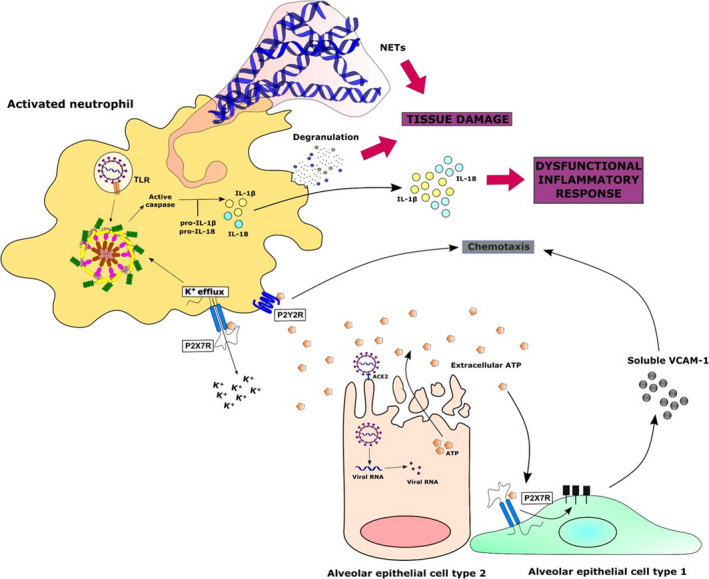Figure 2.

Potential role of the purinergic signalling in the activation of neutrophils against SARS‐CoV‐2 infection. Extracellular ATP released from SARS‐CoV‐2‐infected cells can modulate several functions of infiltrating neutrophils, such as chemotaxis through P2Y2 receptors. Stimulation of P2X7 receptors could stimulate the release of a soluble form of VCAM‐1 from alveolar epithelial cells type I and act as well as a chemoattractant. Similarly, ATP‐induced neutrophil P2X7R activation could also result in NLRP3 inflammasome assembly and IL‐1β and IL‐18 secretion, contributing more to the generation of an exacerbated inflammatory response. Finally, the accumulation of neutrophils in the infected tissue can lead to tissue damage due to a massive and sustained release of toxic contents from its granules and so‐called neutrophil extracellular traps (NETs)
